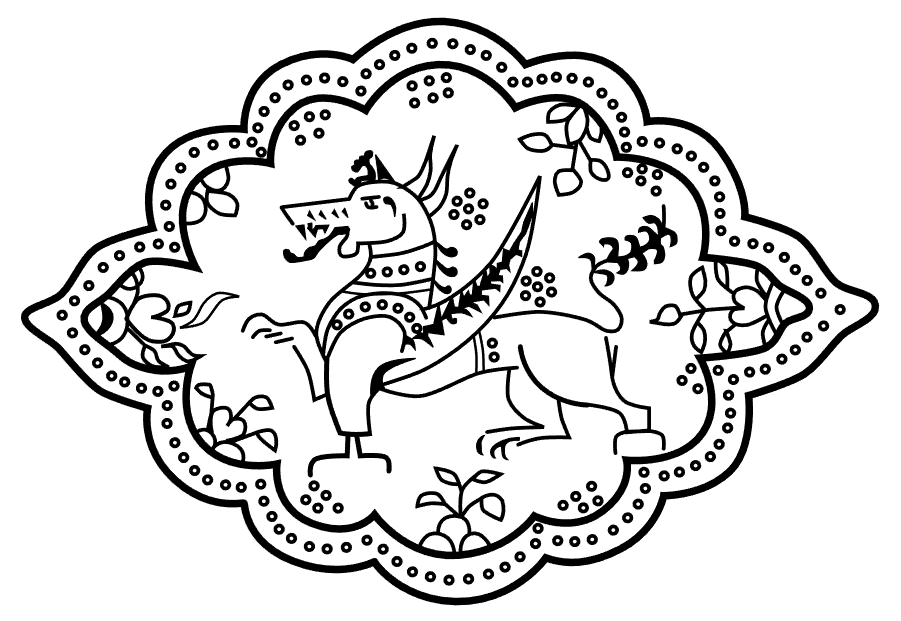The one ruler to rule over the mountains
Mong Mao was an empire established in 560 A. D., that ran all the way from the Tibetan Frontier to what is the modern-day Arunachal Pradesh, Myanmar, China and Assam. It was a state formed of the ethnic ruling class of Dai that controlled and commanded several subordinate Tai Chieftainships.
Chaolung Sukapha or Siu-Kha-Pa was a Tai Prince from the Mong Mao empire that ventured into what became the modern-day Assam and set the foundation stone of one of the longest reigning dynasties in Indian-Eastern empires in history. He became the first ruler and founder of the Ahom Empire of Assam, in the year 1228.
His impact was so great on the North East and its unification from the time of warring states and tribes that is credited to him that the prefix ‘Chaolung’ is actually an honorific that’s closest translation is ‘Lord’, which people in his kingdom associated with him out of respect.
Sukapha managed to bring together the various indigenous tribes and small chiefly states in the region that had been at war for ages and untied all of Assam under his name and banner. Sukapha was an able statesman and while he treated his subjects somewhat harshly, he adopted a more non-confrontational approach to annexation where anyone that agreed with the Ahom way of wet rice culture was accepted and annexed into the kingdom and tactical and strategical appending of small states were done into the kingdom by marriage alliances and political unification treaties that were beneficial to both parties involved.
Sukapha was a Tai Prince from the Shan Region of Myanmar and had to make a great journey past the Patkai Hills in order to get to Assam which was a gruelling ordeal to undertake in times prior to the World War era when several passes were built for a supply run. In commemoration of Sukapha’s travel and setting foot in Assam, even today December the second has been celebrated as Sukapha Day in Assam since 1996.
Ahom Rapid Expansion and Treason against state
The dynasty itself lasted about six centuries and for the most part of the definition of who was Ahom and who wasn’t remained rather vague and mostly up to the king to define. This led to the actual kingdom being much more diverse by the time of Suhungmung in 1497, where his reorganization strategies saw exponential growth in size and power of the state and Ahom people at the time accounted for just over 10% of the actual population.
Suhungmung took a chance losing Chutia and Kachari regions but as a result, expanded the region beyond the previously almost unpopulated regions that Sukapha has annexed in his strive to not fight the densely populated regions. Suhungmung’s expansion increased the Ahomization rate so much that even the kingdoms of Nagas and Maran were completely Ahom now.
Soon the expansion increased even more in pace and Ahom themselves became scarce and multitudes of ethnicities became part of the Ahom kingdom without actually being Ahom themselves.
In the year 1769, a great power struggle between the Ahom and the Moamorias inside the Ahom Kingdom itself started as a form of rebellion and treason against the state.
The Ahom kings failed to have enough foresight to see this attack coming and on two separate occasions failed to maintain control over their state, on both of these occasions the retaking of the throne meant certain death and the slaughtering of hundreds and thousands of subjects in an already scarcely populated land (comparatively), thus inciting a mass depopulation incident. Bengmara in the North East of the kingdom gained independence in the form of a self-governance system allowed on the grounds of taxes and tribute payment to the Ahoms, virtually making it a free state ruled by the office of Borsenapati.
In 1826, After the Anglo-Burmese war right after the second Burmese invasion of Assam, the British East India Company seized control over the Ahom kingdom but amongst growing discontentment in the masses and an unfamiliar expanse to handle, they reinstalled the then already once dethroned (1818-19) King Purandar Singh as the king of Ahom a second time in 1833 and this man would turn out to be the last king of Ahom, ultimately for Ahom to become the state of Assam and a part of the sovereign republic of India.

Leave a Reply